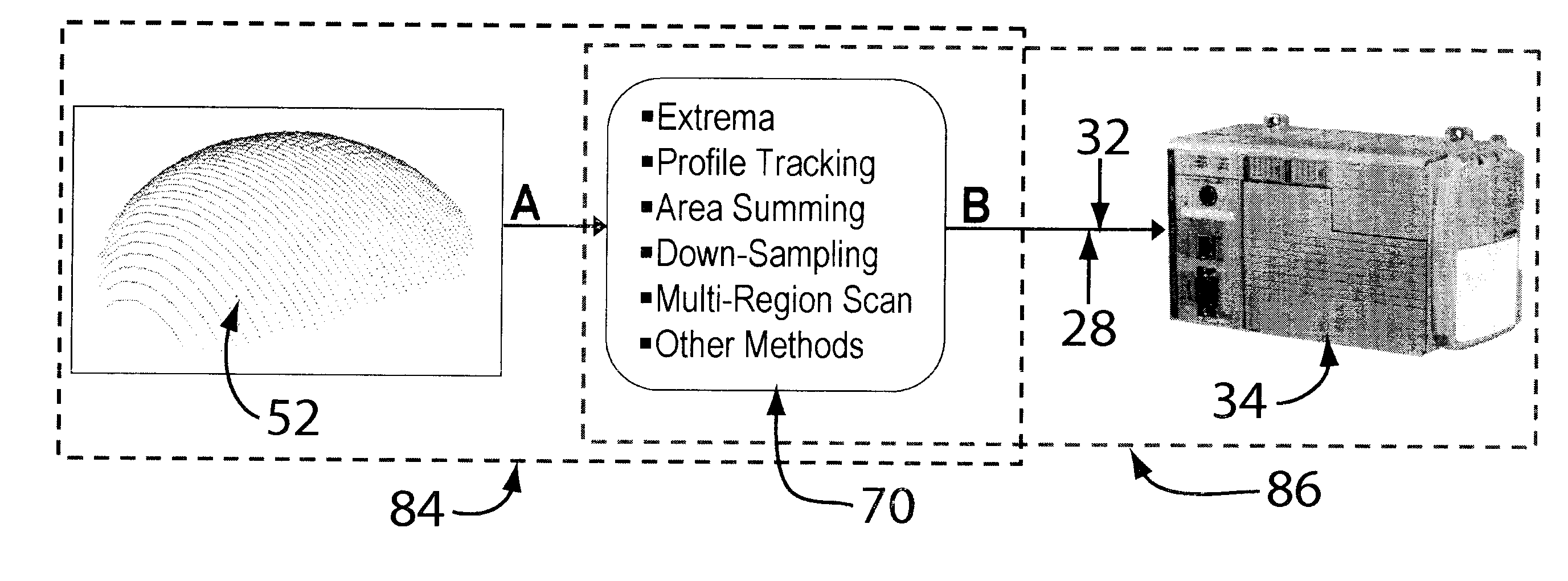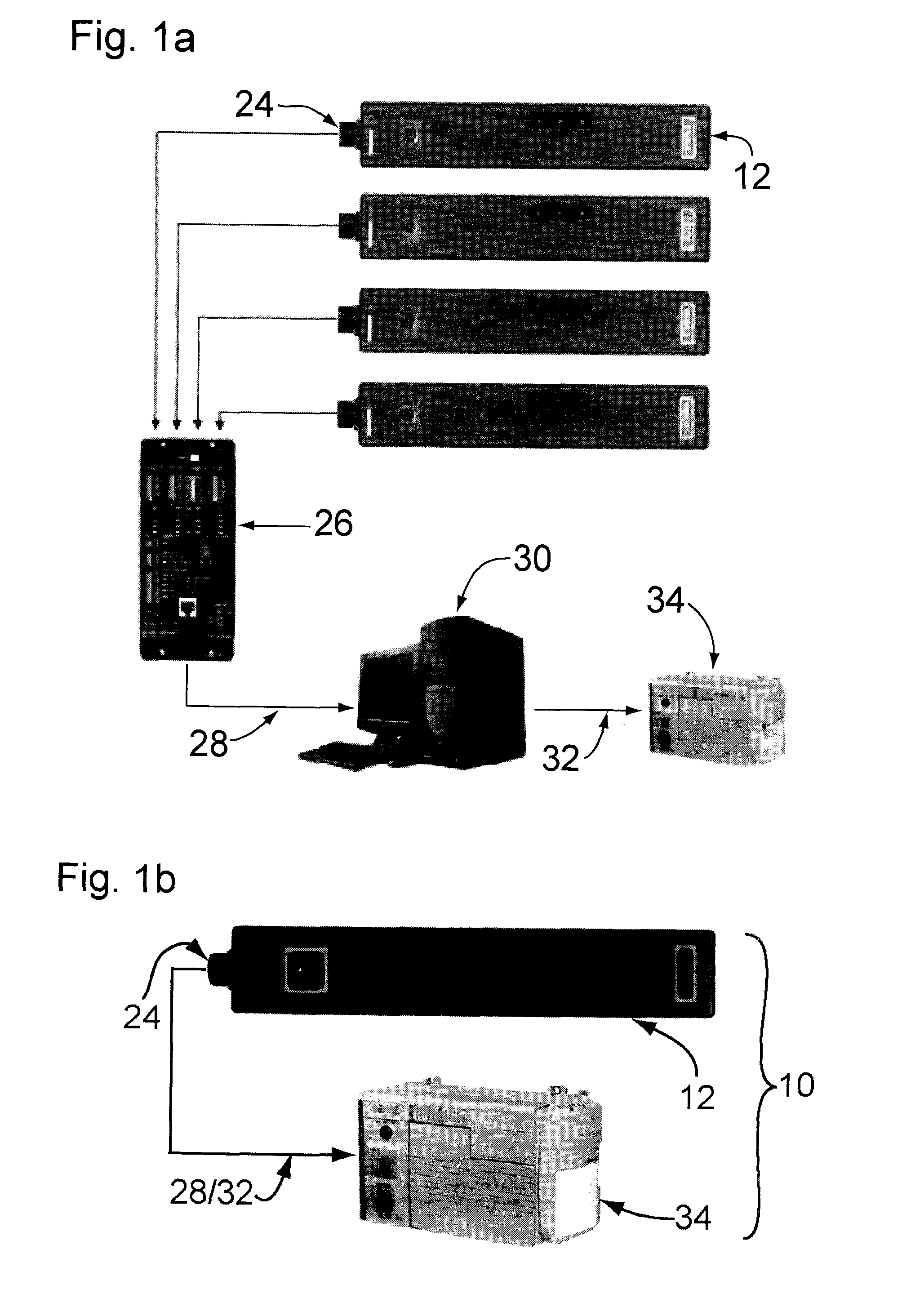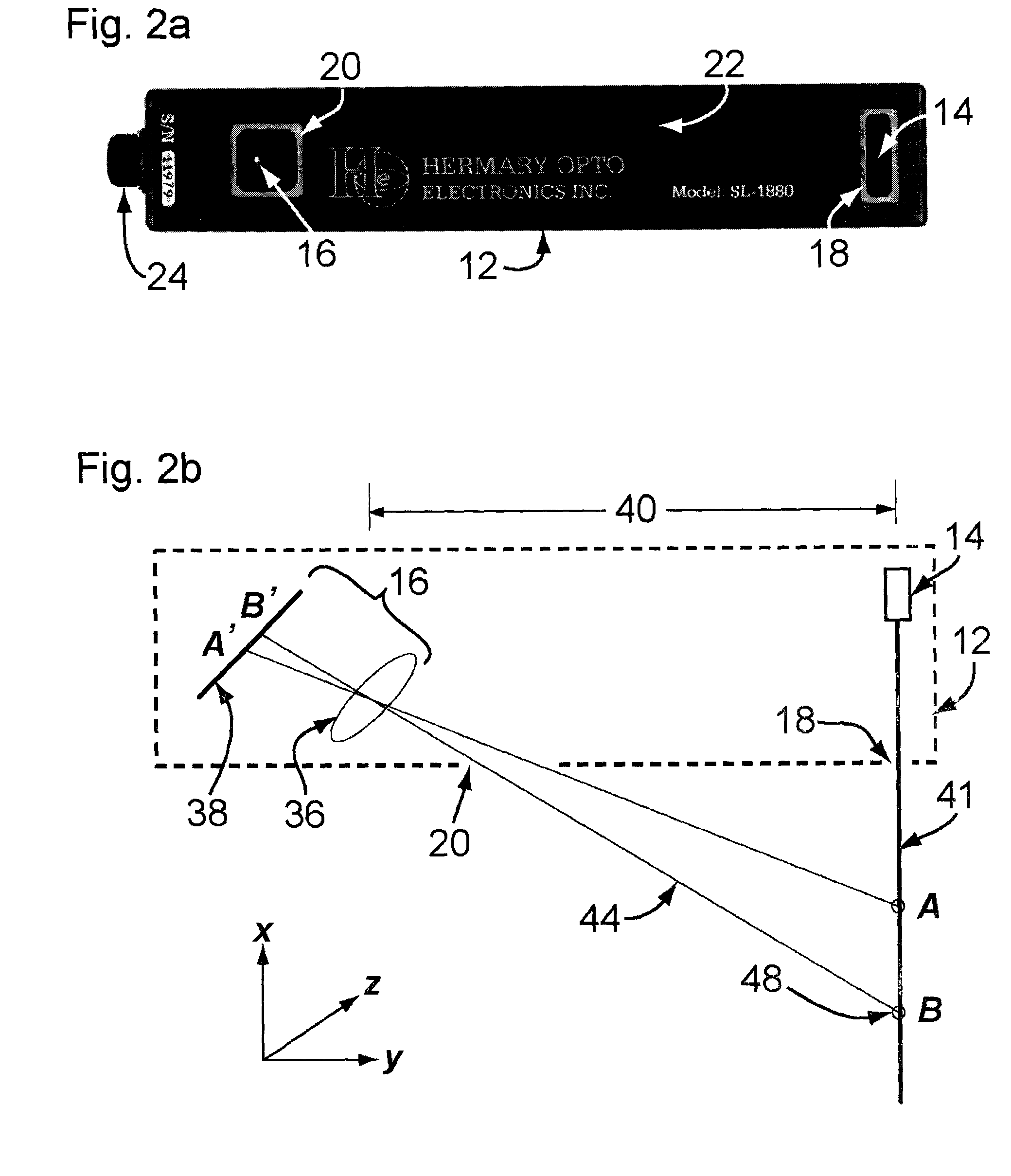3D machine vision scanning information extraction system
a technology of information extraction and machine vision, applied in the direction of electric digital data processing, program control, instruments, etc., can solve the problems of data processing, inability to accurately or automatically, expensive, labor-intensive,
- Summary
- Abstract
- Description
- Claims
- Application Information
AI Technical Summary
Benefits of technology
Problems solved by technology
Method used
Image
Examples
Embodiment Construction
[0044]The 3D Machine Vision Scanning Information Extraction System will now be described by reference to figures and critical terminology will be discussed.
[0045]FIG. 1a shows a number of scanners 12 sending scan data from each scanner output 24 to a multiplexer / encoder 26, then by means of an ethernet industrial protocol (EtherNet / IP™) 28 connection to a workstation / PC Interface 30, which analyzes and processes the data and converts it into a Common Industrial Protocol (CIP™)—CIP and EtherNet / IP are trademarks of ODVA, which is an international association comprising members from the world's leading automation companies. Collectively, ODVA and its members support network technologies based on the Common Industrial Protocol (CIP). These currently include DeviceNet, EtherNet / IP, CompoNet, and ControlNet, along with the major extensions to CIP CIP Safety and CIP Motion. All these trademarks are of ODVA, which manages the development of these open technologies, and assists manufacturer...
PUM
 Login to View More
Login to View More Abstract
Description
Claims
Application Information
 Login to View More
Login to View More - R&D
- Intellectual Property
- Life Sciences
- Materials
- Tech Scout
- Unparalleled Data Quality
- Higher Quality Content
- 60% Fewer Hallucinations
Browse by: Latest US Patents, China's latest patents, Technical Efficacy Thesaurus, Application Domain, Technology Topic, Popular Technical Reports.
© 2025 PatSnap. All rights reserved.Legal|Privacy policy|Modern Slavery Act Transparency Statement|Sitemap|About US| Contact US: help@patsnap.com



